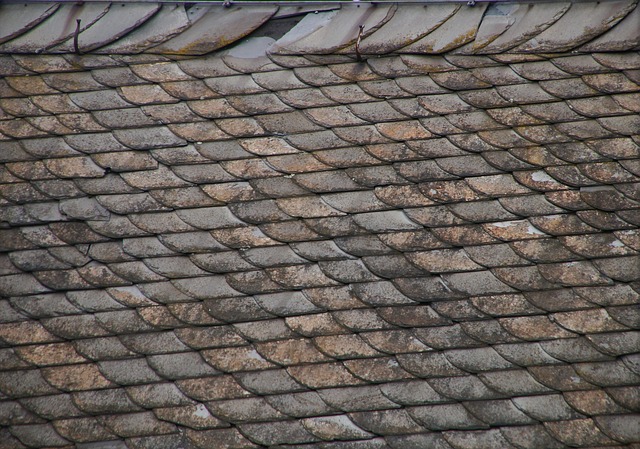Heavy summer rainfall poses risks to flat roofs, necessitating proactive summer roof care. This includes regular maintenance like drainage system inspections, gutter cleaning, and ventilation checks. Conduct pre-storm inspections, address weaknesses, secure fastenings, and implement effective drainage systems. Use durable materials like reflective membranes or coatings for added protection against UV damage and heat. Regular maintenance prolongs the lifespan of flat roofs, prevents water damage, and ensures optimal summer roof care.
In regions experiencing heavy rainfall during the summer, proper preparation of flat roofs is crucial to prevent damage. This article guides you through essential steps to fortify your flat roof against intense storms. From understanding the impact of heavy rainfall and identifying vulnerabilities to implementing effective drainage systems and choosing durable materials, each section offers valuable insights for optimal protection. Learn how regular maintenance checks can ensure your roof stands strong during summer rains, promoting longevity and sustainability.
Understanding the Impact of Heavy Rainfall on Flat Roofs
Heavy rainfall can significantly impact flat roofs, leading to potential structural damage and water intrusion if proper drainage systems aren’t in place. During intense summer storms, flat roofs are particularly vulnerable due to their lack of slope, which prevents water from quickly draining. As a result, water pools on the roof surface, exerting immense pressure that can weaken seals and connections over time. This not only compromises the integrity of the roof but also increases the risk of leaks, mold growth, and other associated issues.
Understanding the severity of these effects is crucial for effective summer roof care. Property owners must prioritize regular maintenance, including inspecting drainage systems, cleaning gutters, and ensuring proper ventilation to mitigate the impact of heavy rainfall. Proactive measures such as these not only extend the lifespan of flat roofs but also safeguard against costly repairs and disruptions caused by water damage.
Identifying Weaknesses and Potential Damage Points
Before preparing your flat roof for heavy rainfall, it’s crucial to identify weaknesses and potential damage points. During summers, when the sun beats down on your roof, weak spots can become more pronounced. Look out for signs of leaks, cracked or broken shingles, or any uneven surfaces—all indicators of potential problems that could lead to significant damage during intense rainfall.
Regular inspections are key to summer roof care. Check for blocked gutters and drains, as these can cause water to pool on your roof, leading to structural issues over time. Additionally, ensure that all fastenings are secure, as high winds or heavy rain might otherwise dislodge them. By addressing these weaknesses proactively, you’ll protect your flat roof from the worst that summer’s storms have to offer.
Implementing Effective Drainage Systems for Optimal Protection
Implementing effective drainage systems is a vital step in preparing flat roofs for heavy rainfall during the summer. Proper drainage ensures that excess water does not accumulate on the roof, which can lead to damage and leaks. One of the most common and efficient methods is installing roof drains or downspouts. These components collect rainwater and direct it away from the building’s foundation, preventing erosion and flooding. Additionally, incorporating slope into the design of the roof surface aids in natural water flow, further reducing the risk of water saturation.
During summer roof care, regular inspection and maintenance of drainage systems are essential. Clogged drains or faulty downspouts can compromise the entire setup, so keeping them clear and functional is crucial. Using mesh covers on drains and regularly clearing debris ensures optimal performance. Moreover, ensuring proper grading around the roof’s perimeter helps in guiding rainwater towards the drainage systems, minimizing the chances of water pooling and maximizing protection during intense rainfall events.
Choosing the Right Materials for Longevity and Sustainability
When preparing flat roofs for heavy rainfall, selecting durable and sustainable materials is paramount. In the context of summer roof care, it’s crucial to choose products that can withstand intense sunlight, extreme temperatures, and relentless rain. Opting for high-quality, reflective roofing membranes or coatings can significantly enhance the longevity of your flat roof by protecting against UV damage and heat absorption.
These advanced materials not only ensure superior performance during heavy rainfall but also contribute to energy efficiency. Reflective surfaces help reduce the rooftop’s temperature, minimizing the urban heat island effect and lowering cooling costs. By investing in such materials, homeowners can enjoy a more robust, environmentally friendly, and cost-effective roof system that requires less maintenance over time, making it an ideal solution for summer roof care.
Regular Maintenance Checks to Ensure Robust Performance During Summer Rains
Regular maintenance checks are vital for ensuring your flat roof performs robustly during the intense summer rains. This involves meticulous inspections to identify and rectify any weak spots or potential issues, such as loose or damaged shingles, clogs in drainage systems, or signs of wear and tear. Conducting these checks at regular intervals—ideally every few months—enables proactive measures to prevent water damage and structural instability.
Summer roof care requires a comprehensive approach, focusing on enhancing drainage efficiency and reinforcing the overall integrity of the roof. Proper maintenance involves cleaning gutters and downspouts free from debris, ensuring smooth water flow away from the building’s foundation. Additionally, applying high-quality sealants and coatings to the membrane can significantly improve its resistance against water intrusion, prolonging the lifespan of your flat roof.
Preparing flat roofs for heavy rainfall is essential for maintaining their integrity during the summer months. By understanding the impact of extreme weather, identifying potential weaknesses, and implementing robust drainage systems, homeowners can protect their properties from costly damage. Choosing durable materials and conducting regular maintenance checks further ensure a roof’s longevity and performance under intense summer rains. Adopting these practices makes it possible to navigate the challenges posed by heavy rainfall, safeguarding both homes and the environment.
